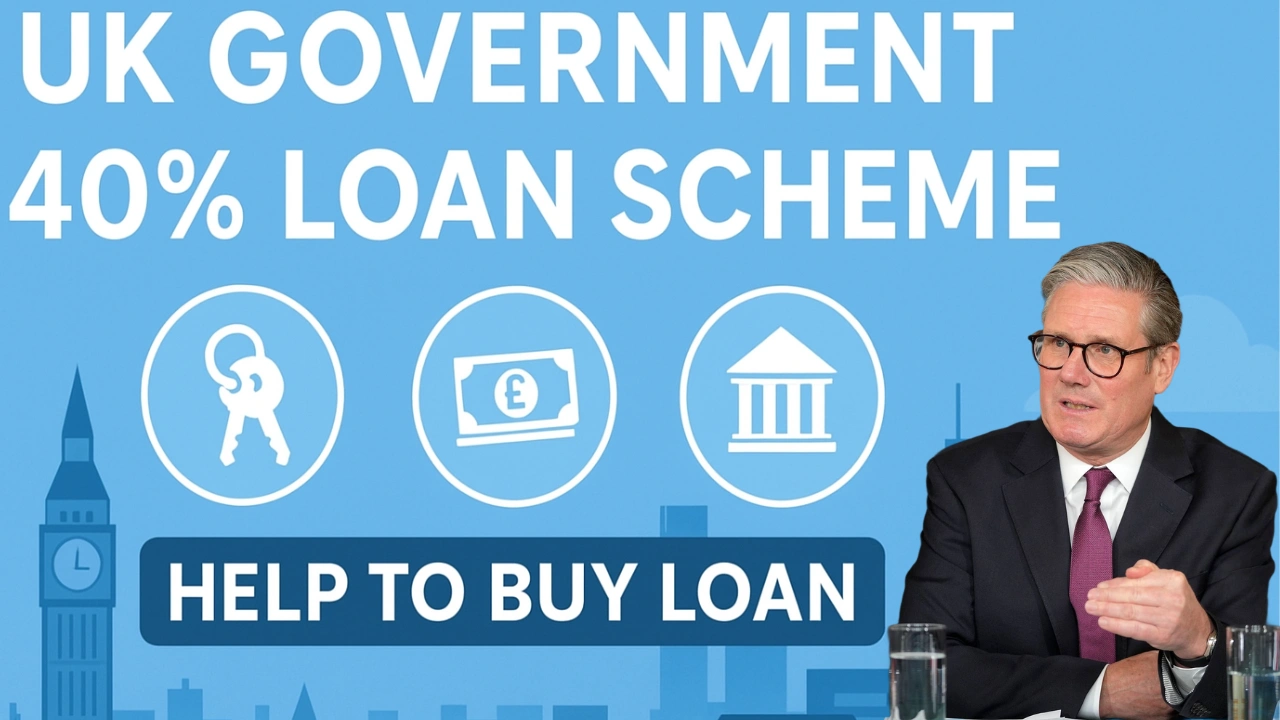Strong Opening Announcement
The UK Government has launched a restructured 40% Loan Scheme, effective 2025, delivering more accessible financing to small and medium-sized businesses – especially those in innovation and energy sectors – and this article cuts straight to why that matters for you.
Background & Context
Since the 2008 financial crisis, funding gaps for small businesses have persisted. In response, the government introduced loan guarantees and other support programs. The 40% Loan Scheme, historically used to back innovation and green tech, has been retooled in 2025 to fill fresh gaps in business financing. This revamped version reflects the UK’s shift toward decarbonisation, post-Brexit priorities, and a renewed focus on levelling up regional economies.
Who Will Benefit
Eligible Sectors and Businesses
-
Innovative startups focused on R&D, clean energy, and digital transformation.
-
SMEs in manufacturing and engineering aiming to upscale operations.
-
Regional enterprises in underserved areas—especially the Midlands, North East, and Wales.
Qualifying Criteria
-
Must be UK-registered businesses with fewer than 250 employees.
-
Annual turnover under £45 million or a balance sheet total under £38 million.
-
Clear demonstration of growth potential or community impact.
-
Commitment to net-zero goals where applicable.
Why the Decision Was Made
With economic headwinds and global uncertainty, the UK Government sought bold action. Rising energy costs, faltering growth post-COVID-19, and ambition to hit net-zero by 2050, placed renewed urgency on funding innovation. By guaranteeing 40% of loan value, the scheme mitigates lender risk and incentivises investment—bringing both fiscal responsibility and forward momentum.
How It Works
Scheme Mechanics
-
Loan Guarantee Cover: Government covers 40% of loan default risk, reducing lender exposure.
-
Loan Terms: Up to £5 million per business, with repayment terms ranging from 5 to 10 years.
-
Interest Rates: Negotiable between lender and borrower. Government does not directly set rates, but caps maximum APR around 6–7% for qualifying projects.
Application Process
-
Register intent via the Business Finance Support Portal.
-
Submit a business plan and financial projections.
-
Apply through an accredited lender—e.g., Barclays, NatWest, HSBC, or regional development banks.
-
Lender submits guarantee request to BEIS (Department for Business, Energy & Industrial Strategy).
-
If approved, loan is disbursed with 40% guarantee backing.
Impact on the Public
-
Businesses gain confidence: Lower borrowing costs and higher approvals.
-
Jobs safeguarded and created: Particularly in R&D and green industries.
-
Regional resilience: Underserved areas receive capital injection.
-
Net-zero acceleration: Green tech firms are better positioned to scale quickly.
Political & Economic Considerations
-
Fiscal Responsibility: The government maintains balance by limiting guarantees to 40%.
-
Public vs Private Debate: Some argue this may crowd out private investors; others see it as vital in light of current funding gaps.
-
Audit and Oversight: HM Treasury and Public Accounts Committee will closely monitor outcomes to ensure value for taxpayer money.
Stakeholder Reactions
-
Business Associations (e.g., CBI) applaud the innovation push and risk mitigation.
-
Environmental groups commend the green focus, though they want guarantee to target firms with measurable carbon reductions.
-
Banking sector appreciates clarity in risk sharing and streamlined administrative processes.
-
Critics worry smaller micro-businesses, especially in service industries, may still be left out.
How to Apply or Take Advantage
-
Visit the official Business Finance Support Portal (gov.uk site).
-
Prepare documentation:
-
Business plan with financial forecasts.
-
ESG or growth-impact statements.
-
Evidence of regional community benefits where relevant.
-
-
Contact an accredited lender to start application.
-
Ensure alignment with official timelines – applications are open from September 1, 2025, through March 31, 2026 (or until funds are allocated).
-
Monitor phases – some sectors (green tech, R&D) may get priority windows at launch.
Possible Challenges
-
Awareness Gaps: Smaller businesses may not know about the scheme.
-
Administrative Burden: Collating data and meeting lender requirements can be time-consuming.
-
Geographic Unevenness: Despite regional targeting, some pockets may still lack accredited lenders.
-
Repayment Caution: Businesses must remain confident in forecasts to avoid default – even with a guarantee.
Public Response
Early feedback – including from pilot phases earlier in 2025—shows high demand in the green and tech sectors. Business forums cite enthusiasm for lower-cost capital, though some report frustration over “slow lender onboarding” in rural areas. Community groups in devolved nations like Wales demand more localized delivery partners.
What to Expect Next
-
Quarterly Reviews: BEIS will publish performance dashboards—number of loans, regional spread, sectors served.
-
Post-March Extension? If uptake is strong, the scheme may extend into late 2026 or adapt into a permanent facility.
-
Scaling Up Orders: Future rounds may raise guarantee to 50% if fiscal conditions permit, to deepen impact.
-
Additional Support: Grant overlays or technical assistance could accompany the loan guarantee for disadvantaged applicants.
Conclusion
The revamped 40% Loan Scheme for 2025 stands as a significant move by the UK Government to fuel innovation, strengthen regional businesses, and drive progress toward net-zero. By mitigating lender risk and offering accessible financing, the program gives SMEs a chance to grow, scale, and lead the UK’s economic future. Whether you’re a green startup, regional manufacturer, or growth-oriented entrepreneur, this scheme could be your next big opportunity—if you act swiftly and prepare thoroughly.
FAQ
1. When does the 2025 scheme open?
Applications kick off on September 1, 2025, and run through March 31, 2026, or until funds are allocated.
2. What types of businesses are eligible?
UK-registered SMEs, especially in innovation, green sectors, manufacturing, or regional development, with fewer than 250 employees and under £45M in turnover.
3. How much can I borrow?
Up to £5 million, typically repayable over 5 to 10 years.
4. What does the government guarantee mean for lenders?
The government covers 40% of the loan default risk, lowering lender exposure and encouraging more approvals.
5. Will the scheme be extended?
Depend on uptake: strong demand may lead to extensions into 2026, or adjustments—increasing guarantee or adding support layers.
